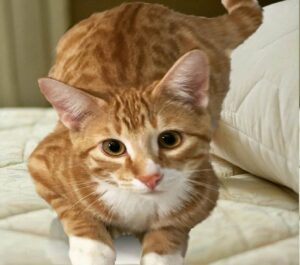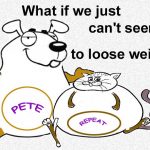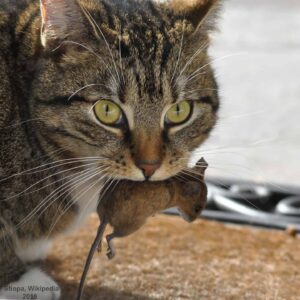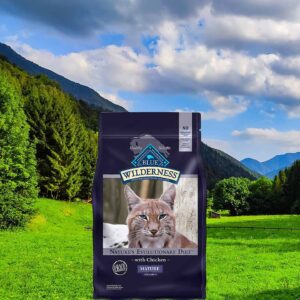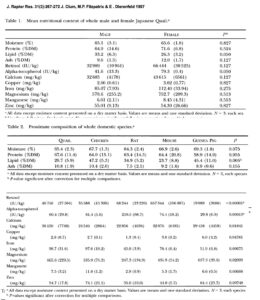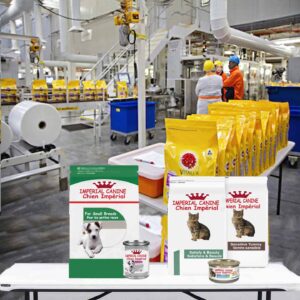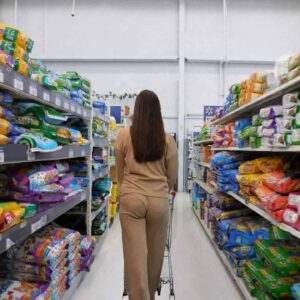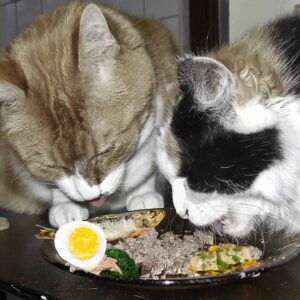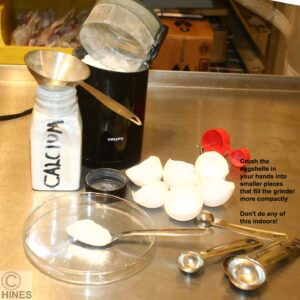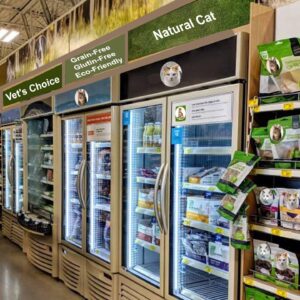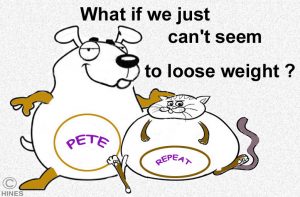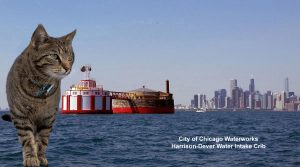What Should I Feed My Cat?
Ron Hines DVM PhD
 Health Problems And Feeding Decisions?
Health Problems And Feeding Decisions?
 A home-cooked diet for my cat here and here
A home-cooked diet for my cat here and here
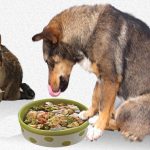
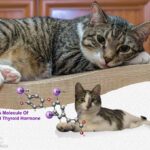

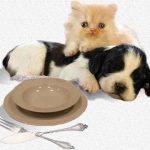
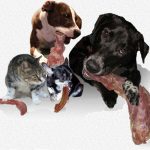
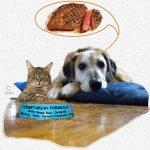
Dry commercial cat chows (kibbles, biscuits) are so convenient for us cat owners. Kibble also helps massage your cat’s gums, which minimizes tartar, gum disease and bad breath. (read here) Kibble stays fresh longer than wet food after you open the bag. It is also more economical than canned, prepackaged-fresh or home-prepared diets. But veterinarians and cat owners have begun to question how wise it really is to feed your cat a diet that is entirely unnatural for felines in its consistency, protein origin, water and nutrient content. One of my biggest concerns is that cats that primarily consume dry kibble rarely if ever consume enough water to compensate for the unnatural dryness of their diet. Some veterinarians believe that leads to a chronic state of dehydration, which in itself can lead to numerous health issues. You can read more about the dehydration issues in articles about caring for elderly cats here & here. Perhaps it’s time for you to think about pulling up an extra chair at your table and cooking for your cat yourself. Veterinary nutritionists, in the pay of the kibble and canned pet food industry, suggest you not think about that. But if it interests you, go here and here, and explore other links at the top of this webpage. Good nutrition and a balanced diet is just as essential to your cat’s long-term health as it is for yours. Take it from the FDA and its frequent pet food recalls; the only way you will ever know what is actually in the food you are feeding your cat is to prepare it yourself from supermarket ingredients you eat as well.
Domestic cats have not evolved from their rodent-eating wild ancestors in the metabolic ways that dogs have. At least not as successfully. In their nutritional needs, house cats are much the same as their wild ancestors. Cats evolved to be particularly well suited in digesting high quality animal protein. Despite the beautiful graphics on their sacks and cans, many contain high fiber plant content, high sugar fruits, soybean products, potatoes, and grains that we humans all love to eat but which are unnatural for cats. Nature gave cats a different dietary niche. (read here & here) Their ability to convert stored carbohydrate glycogen into needed energy is poor. (read here & here) Their liver lacks various metabolic pathways common to dogs and people. (read here) Cats seem to thrive on a diet that is ~64% percent protein, ~30% fat, and 6 percent or fewer carbohydrates on a dry weight basis. That is quite close to the contents of a mouse or a rat, which is ~66% water. Canned diets are ~75-80% water. Kibbles are ~10% water. I would not feed your homebody cat a diet quite this high in fat. Your cat doesn’t get the amount of exercise required to burn those fat calories and would be likely to become too plump. Lower the fat by half and in its place, add diced or ground cooked veggies. They can be raw if they are sanitary and do not cause your cat indigestion, bloat or diarrhea. (read here)
Obtaining unbiased information regarding health risks related to what you feed your cat is difficult. You are not going to get it from the pet food manufacturers or the “scientific studies” they underwrite. For instance, cats are known to be much less efficient in processing the high carbohydrate content of grain or starchy vegetable-containing diets than dogs or us humans. However, these high carbohydrate diets earn cat food manufacturers enormous profits. High-quality meat diets would earn them considerably less. As public awareness of the high carbohydrate content of commercial cat food, the potential drawbacks of dry kibble and their low-quality ingredients become common knowledge, company strategy has been to push back vigorously. (read here & here) Starch is starch, it doesn’t matter if it’s corn starch, potato starch or pea starch. Many veterinarians associate the increased number of elderly cats with diabetes, obesity and gastrointestinal issues due to their consumption of these products.
If I Can’t Make The Food Myself, Should I Feed My Cat A Canned Or A Dry Diet?
Given their choice, most young cats prefer canned diets. Because of processing constraints, the aroma, flavor, and palatability of dry diets do not match those of canned ones. A preference for canned diets is not always the case in older cats because cats are creatures of habit. Over time, it is common for them to become accustomed to a flavor and consistency they are used to – often to the exclusion of all others. Whichever you buy, be sure the label says that the diet meets the National Research Council’s guidelines on feline nutrition and is certified by the AAFCO. Although the AAFCO is basically a pet food industry trade association, it is the only policeman that we currently have. The NRC got out of the business many years ago. When the NRC was still active, their studies never addressed the long-term consequences of catfood dietary ingredients. Over the years, I have noticed that cats fed dry diets do have less tartar build up on their teeth and less gum disease surrounding their teeth. With time, gum inflammation associated with canned and moist diets causes the tissues surrounding the teeth to recede and the teeth to loosen. There are ways to control that. You can brush your cat’s teeth, give it carefully selected treats or have your veterinarian or groomer clean them. (read here & here) Many believe that with time, chronic gum inflammation (gingivitis) allows bacteria to wander through your cat’s blood stream from its infected gums and lodge in its kidneys, heart or liver, much as it does in humans. (read here)
Should I Feed My Cat A Raw Diet?
In the last few years, raw meat diets have become a popular topic among pet owners. I am hesitant to recommend them because I have seen several catteries contaminated with fatal salmonella which, I believe, was caused by feeding raw contaminated meat. Those catteries did not feed supermarket meat. They fed meat of a much poorer quality. However, even if you feed your cat raw supermarket poultry, or ground meat, sooner or later, your cat will be exposed to salmonella. Health cats and healthy people, exposed to salmonella rarely experience more than 2 – 7 days of diarrhea and discomfort (read here & here) but there are exceptions. If you do decide to feed a raw diet in spite of that, I suggest that all ingredients you include in it were marketed for human consumption. Buy them all at your local supermarket. You will need to fortify your cat’s diet with an adequate source of powdered calcium. I use the small electric coffee grinder you see in the photo above to make fine eggshell powder. Sufficient fat soluble vitamins (A, E, D & K) are also unlikely to be found in sufficient quantity in muscle red meat or poultry. But if you feed your cat beef or poultry liver or oily fish such as herring or salmon, once a week, those vitamins will be in adequate supply. Water-soluble vitamins, all of which are present in quality meat, need to be replaced every day. Fat soluble vitamins are stored in your pet’s body for a much longer time. To have the best of both Worlds, lightly cook all the ingredients. It doesn’t take that high a temperature to kill disease causing organisms that can lurk in uncooked ingredients. Read more about that here. There is no reputable scientific evidence that raw foods are any healthier for your cat than lightly cooked foods.
What About Just Buying A Raw Prepared Cat Food Sold At My Supermarket, PetSmart Or Petco?
When you purchase prepackaged raw cat or dog food offered by pet food manufacturers, you simply add more layers of opportunity for bacteria, toxin contamination and formulation errors to occur. More fingers have touched the pie, more low-paid employees back and forth to the restrooms, mindless robotic machines mixing, grinding and chopping. Machines that can’t tell metal or plastic scraps from wanted ingredients. Freezer breakdowns. Added opportunities for rodent contamination. Bulk vitamins purchased overseas. All add up to more risk. All you get in exchange for that extra risk is personal convenience.
How Much Should I Feed My Cat?
Cats differ so much in their individual metabolisms that the amount of food each of them needs to maintain optimal weight and health is hard to predict. If you have multiple cats, you already know that. A large portion of adult cats are overweight. Because they store their fat under their tummies, at first, your cat may not appear fat to you when seen from above or the side. It just has a deeper rectangular silhouette. By the time your cat is obviously overweight, the problem has probably been going on for quite some time. Growing cats and kittens require considerably more food per pound body weight to thrive and grow than adult and senior cats do. But you probably just kept filling its bowl like you used to. Read about ways to deal with that here. The nutrient density and water content of your cat’s diet are also large factors in determining your cat’s optimal food consumption.
Special Cat Requirements
Cats are also unusual in that they cannot convert the carotenes found in leafy plants into vitamin A as us humans can. Their natural source of pre-formed vitamin A was the liver of their prey. Vitamin A is necessary for membrane health. All body surfaces are covered with a cell membrane of one form or another: the skin, the intestinal tract, the eyes, the lungs. So cats deficient in vitamin A are more susceptible to respiratory tract infections, eye and skin disease. Niacin or nicotinic acid is one of the B vitamins. It is also essential to your cat’s health. A lack of niacin predisposes your cat to inflammation of its intestines, rough skin and hair coat, oral ulcers and increased susceptibility to infections in general. Most mammals can synthesize niacin from the amino acid, tryptophan. Your cat has lost that ability, so it must obtain all of its niacin from its diet. Cats must obtain the fatty acid, arachidonic acid from their diets as well. Animal fats are a rich source of arachidonic acid. Unlike most mammals, cats cannot synthesize taurine from the amino acids cysteine and methionine. They must obtain all of their taurine from the muscle meats in their diet. A lack of sufficient taurine in your cat’s diet can result in blindness, heart enlargement and heart failure. (read here) In addition to these special nutrients, cats have a higher protein and fat requirement than dogs and many other mammals.
Although high fiber diets are not natural for cats to consume, some dietary fiber residue aids in normal gastrointestinal motility. Dietary fiber also seems to aid in preventing the hyperglycemia (high blood sugar) and diabetes that are rather common in older overweight cats. That is why diets designed for cats with diabetes have increased fiber content. Increased fiber content can also be beneficial to cats with constipation problems. But too much fiber can lessen the absorption of vitamins and minerals and lead to diarrhea. In the formulation of feline diabetes diets that is taken into consideration.
How Often Should I Feed My Cat?
An average-sized adult cat weighing nine pounds is said to normally consume about 240 kilocalories a day. That means little to me and probably very little to you as well. But veterinary nutritionists like to mention it, so I will as well. Neutered cats generally need fewer calories per day than intact cats, but they are inclined to eat more. Cats enjoy munching on and off throughout the day. So, I suggest food be available to your cat all the time or in multiple small meals throughout the day. Frequent small feeding and exercise could conceivably less the likelihood of digestive tract issues such as triad disease. And small meals seem to lessen their tendency to obesity as well.
When food is available to your cat throughout the day, cats are said to typically eat ten to twenty small meals per day. Younger cats tent to self-regulate their caloric intake and stay lean. But twenty to forty percent of cats become overweight over time when food is always available (=free choice). As your cat ages and sleeps more, it might be better to feed it a diet that is less caloric. One always needs to consider a cat’s age and body condition when planning its diet. Problems occur more often in multi-cat households because it appears to me that there is often one cat that needs to eat more, and another that needs to eat less. The only way I have found to solve this problem is to feed different cats in different closed rooms of your home several times a day. Give them about twenty minutes at a feeding.
Thin cats should be encouraged to eat one-and-a-half times your normal cat’s ration. Be sure your thin cat gets checked out by your veterinarian for possible causes. Increased food consumption is best accomplished with delightful odors and smells, treats and pungent flavors. Your vet sells various “energy drinks” such as a/d®. I never found a need for them unless the cat had to be tube-fed, suffered from a head/mouth injury or generalized weakness. Feed chubby cats foods that are advertised as lower in calories or just feed them less if you can stand their begging and meowing. If your cat is fed only two thirds of the food it presently consumes, weight loss will be gradual and gentle.
How Much Water Does My Cat Need?
Cats are not big drinkers. They tend to drink considerably less than dogs do. That is possibly because some of our cats descended from the desert sand cats of Egypt. (read here) In addition to that, all the ancestors of our domesticated cats lived primarily on rodents that were ~66% water. (read here) This tendency to drink less water than they should, particularly when they consume mostly dry cat food, might also be the cause of their high susceptibility to urine crystals and subsequent lower urinary tract disease. (read here) Your cat should have access to water in several places at all times. If it is eating canned food, it will naturally drink less because canned food is so high in water. Adding water to your cat’s food (up to 40%) is an excellent way to help chubby cats consume more water, lose weight and encourage their activity. (read here)
You are on the Vetspace animal health website
Visiting the products that you see displayed on this website help pay the cost of keeping these articles on the Internet.

